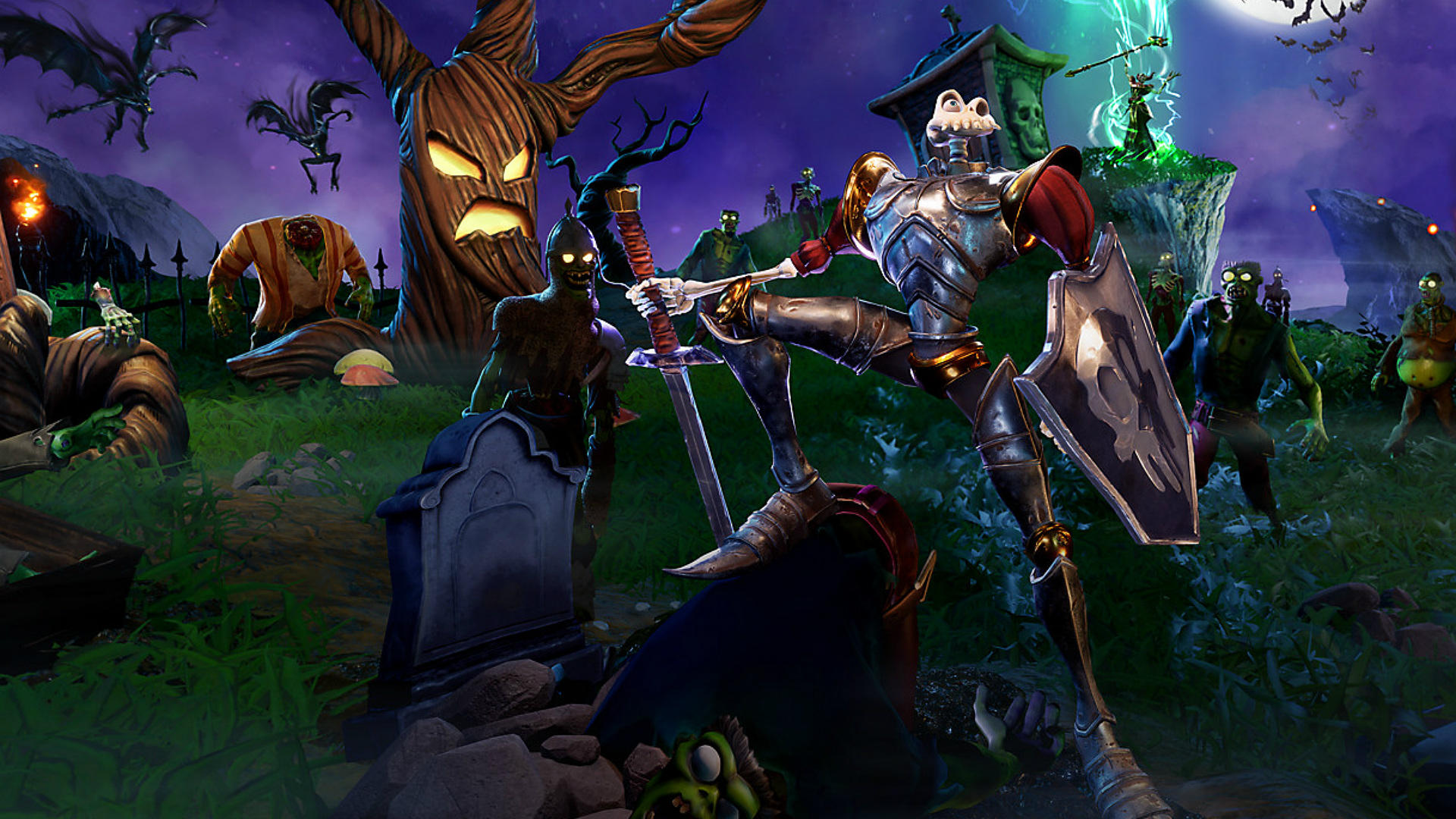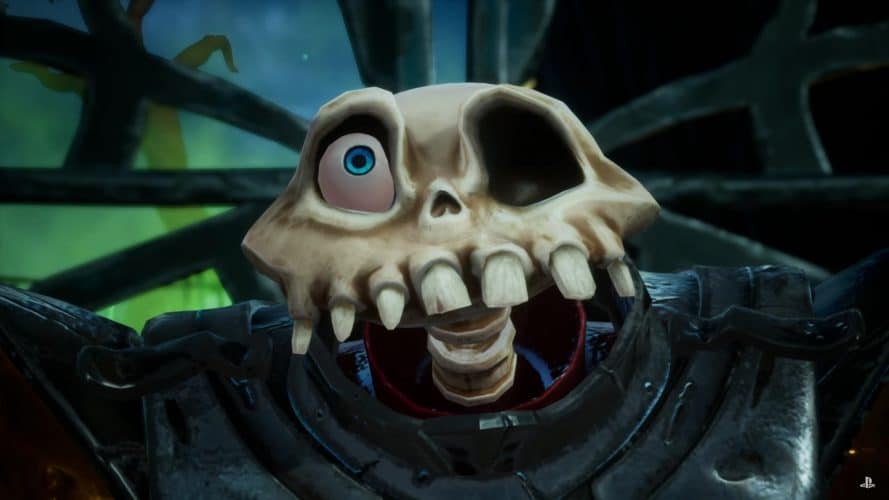Since its first appearance in 1998 on PlayStation, MediEvil has established itself in the hearts of fans of adventure and dark fantasy games. During this Halloween season, what better time to revisit this video game treasure that remains deeply anchored in the memories of so many fans? But before diving into the world of the game, let’s briefly retrace its history.
A quick history of MediEvil, to remember the good times
MediEvil was born in 1998, the fruit of the work of SCE Cambridge Studio and published by Sony Computer Entertainment for the first PlayStation. Unfortunately, this studio, later renamed Guerrilla Cambridge, will close its doors in January 2017. With it, the license finds itself somewhat half-buried in the grave.
The game introduces us to the atypical character of Sir Daniel Fortesque, a resurrected skeletal knight whose mission is to free the kingdom of Gallowmere from the clutches of the evil wizard Zarok. Upon release, MediEvil was praised for its gothic style, captivating gameplay, and offbeat humor, quickly establishing itself as a PlayStation staple. Its success was such that a sequel was released two years later.
MediEvil 2 arrived in 2000, still on PlayStation. This time, Sir Daniel awakens in a Victorian-era London, pitted against a new antagonist, Lord Palethorn. Equipped with new weapons, facing new enemies and solving new puzzles, the game continues to seduce its audience while enriching the universe of the series. This was followed by the Resurrection port in 2005 on PSP, which marked the end of the license for almost a decade and a half.
A long absence for MediEvil
After this long absence, MediEvil rose from its ashes in 2019 with a full remake for the PlayStation 4. Completely rebuilt while respecting the essence of the original, it offers modernized graphics while preserving the heart of the gameplay and the storyline, allowing old and new players alike to dive back into the adventures of Gallowmere and Sir Daniel. Although this remake was not unanimous among critics and players, we at Gamblog thoroughly enjoyed it. Your humble servant gave it an honorable rating of 8/10. Looking back, no ounce of regret emerges. Because MediEvil is above all a great epic, and behind each great epic hides a memorable hero.
An endearing hero
Sir Daniel Fortesque is not the traditional hero one might imagine. While he is celebrated as the valiant protector of Gallowmere, his past is far from heroic. Died in the first assault of a legendary battle, he resurrects with the mission of correcting the story and demonstrating his true value. With one missing jaw and one missing eye, Sir Dan is the archetype of the unlikely hero. It is the least we can say. His clumsiness and staggering pace inject a dose of humor into a universe populated by frightening creatures. It’s this contrast that makes it so endearing. He perfectly embodies the anti-hero, a trait often found in the works of Tim Burton.
Moreover, the imprint of Tim Burton is immediately felt in MediEvil. Sinister and sinuous settings, tortured trees, grotesque but charming characters: each element recalls the distinctive style of the creator of films like The Nightmare Before Christmas or Edward Scissorhands. The gothic atmosphere mixed with a dreamlike dimension, the dark tones enhanced by bright and unexpected nuances, everything in MediEvil evokes the Burtonian aesthetic. This harmonious blend of the macabre and melancholy, black humor and poetry, is omnipresent. Playing MediEvil is a bit like immersing yourself in a fantastic tale where the marvelous rubs shoulders with the bizarre at every turn.
Not to spoil anything, like Burton, MediEvil excels in the fusion of humor and the morbid. Death is not treated as a serious subject, but rather as an opportunity to create humorous situations. This tone, mixing gravity and lightness and humanization of the scariest creatures, is also a trademark of the famous director. The ability to juggle these elements is what gives the MediEvil universe its unique flavor.
A tribute to horror classics, before the glut of special effects
The 80s and 90s are iconic for their traditional special effects techniques, a precursor to the CGI era. Monstrous makeovers, elaborate makeup and prosthetics were commonplace. MediEvil plays skillfully with these references, featuring antagonists with bold and extravagant designs, paying homage to the craftsmanship of the professionals of those years. Whether it’s misty landscapes, infested mansions or dark cemeteries, MediEvil takes inspiration from the iconic settings of horror films of this time, while injecting its originality. The atmosphere is both haunting and disturbing, but sprinkled with a touch of humor. Although the atmosphere is gothic, it is far from terrifying, making it a perfect Halloween distraction.

Simple and effective gameplay, like in the good old days
MediEvil immerses us in an adventure merging action and exploration. The game mechanics skillfully combine melee combat, exploration of nooks and crannies and solving puzzles. As Sir Daniel Fortesque, players have a varied arsenal at their disposal, ranging from traditional swords to projectiles such as crossbows, offering a multiplicity of combat strategies. Each stage of the game offers its own challenges, encouraging players to innovate with their tools and adjust their tactics. MediEvil also manages to balance its complexity, attracting newbies while challenging seasoned players.
Although the core elements of the game, such as combat, exploration, and puzzle-solving, may seem straightforward and uncluttered, it is this inherent simplicity that characterizes the power of MediEvil, both in the first game and the second. It offers a varied audience, whether novice or experienced, an immediate immersion in the adventure, without being drowned in convoluted controls or overly sophisticated mechanics. This is also what means that the game has not taken on many wrinkles.
This simplified gameplay design creates natural game dynamics, allowing players to fully immerse themselves in the story, the protagonists and the universe that surrounds them. The magic of this simplicity also lies in the intuitive progression it offers players. It gives the game a certain finesse, where each level is cleverly designed to enhance these essential mechanics. An essence that is difficult to find in contemporary productions.
What better way to celebrate the dead than to play with one of them? To do this, simply dust off your trusty PlayStation 1, or turn to MediEvil Resurrection, available in the PlayStation Plus Premium offer. Without forgetting the remake, which is currently benefiting from an interesting promotion until November 2.

